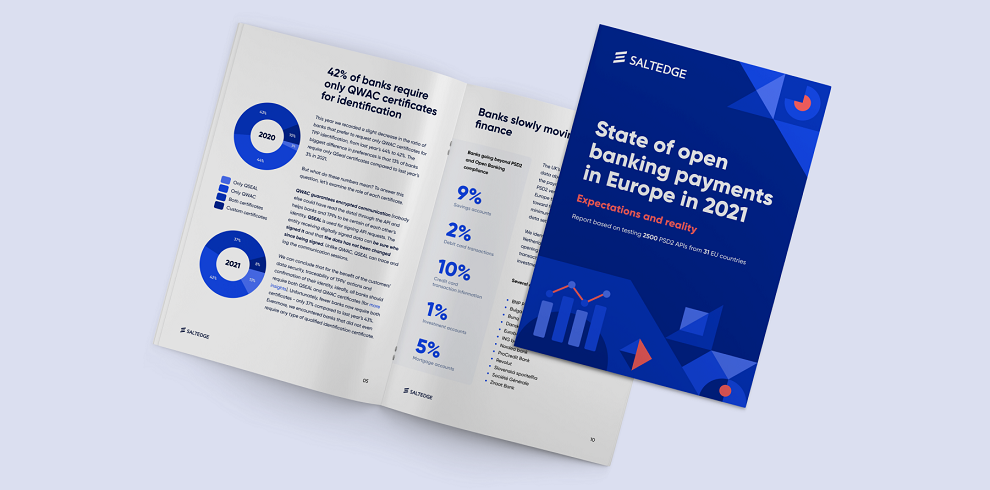Today we mark two years since PSD2 went, at least was supposed to, into full power across Europe and in the UK, on September 14, 2019. And as a tradition already, this year we’ve thoroughly analysed the performance of 2500 PSD2 APIs in 31 European countries, and the overall open banking journey they offer – both for a third party and an end-customer, and compiled the identified insights into a report.
Noticing an increased appetite for open banking, especially for payment initiation services, Salt Edge has created a report that presents the current state of open banking in Europe, with a particular emphasis on payments.
„One might expect more things to have been achieved in these two years, yet we identified interesting dynamics compared to 2020. The APIs’ quality and availability have greatly improved, with top 10 EU countries having rates ranging from 97.61% to 91.12%. While last year the communication between TPPs and banks was mostly one-sided, this year the results have been calibrated and most API requests have been replied to.”, according to the press release.

Out of the almost 2500 regulated APIs integrated by Salt Edge across Europe, 72% claim to be supporting access to business accounts. Germany, Portugal, Spain, Austria, and Croatia are the countries with the highest percentage of banks offering access to both personal and business accounts, creating an environment suitable for innovative services to emerge.

„We were also pleasantly surprised to identify banks that offer access to more banking data than the one required by PSD2. For example, we identified banks in France, Greece, Denmark, the Netherlands, Slovakia, and other countries that have chosen to expand the data set made available through secure Open APIs including information about credit card transaction information, mortgage, savings, and investment accounts,” the company said.
While in 2020 open banking payments APIs were almost not functioning, in 2021 banks offer an ecosystem, although not ideal, but one upon which new services can be built. To help customers in adopting open banking-powered payments, it is critical to ensure a smooth and intuitive user journey.
Yet, the current state of PSD2-enabled payments comes with various layers of complexity at each stage, to name a few: some banks request multiple redirects between the bank and third party (PIS) before a payment order is completed, PSU must go through other 6-8 additional pages which add unnecessary friction, a relatively small number of EU banks supporting mobile App-2-App redirection, banks’ PSD2 APIs not reflecting the actual payment status, banks having delays in consent management resulting in errors and user frustration.
„We’ve described in great detail these and other errors that we encountered at each step within the payment journeys in the report,” Salt Edge explains.
Download the report to discover more about the current reality of open banking in Europe, the identified differences between 2020 and 2021, the biggest obstacles in open banking payments, and much more.
